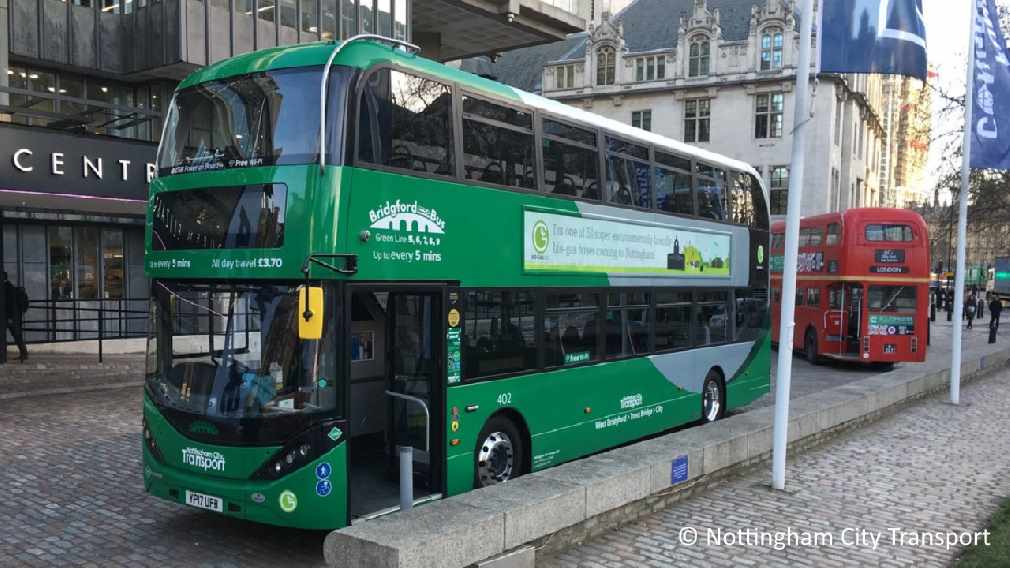So, What is Biomethane?
Biomethane is a renewable, flexible and easily storable, low air pollution and low carbon emission fuel, that can be used wherever natural gas is used, without the need to change any settings on, or carry out any modification to, equipment designed to use natural gas.
Watch our video below, it's short and conveys an important message about biomethane:
It is usually referred to as the resulting gas after upgrading biogas made during the anaerobic digestion process. It is classified as a sustainable green, renewable energy. Not surprisingly it is also known as a “green gas”, and is a well-known and well-proven source of clean energy.
Due to its virtues, it is witnessing increasing demand worldwide, especially in European countries, as it is one of the most cost-effective and eco-friendly replacements for natural gas and diesel.
Biomethane Fuel Use Reduces Carbon Emissions
Just like natural gas, biomethane releases some carbon dioxide and other greenhouse gases into the atmosphere when it is used. But these CO2 emissions would be released anyway if the organic matter that is used for biomethane production would simply be left to decompose.
By contrast, when non-renewable fossil fuel is burnt (combusted) including as a fuel in an engine, Carbon Dioxide (CO2) is released from the earth's crust in rather different circumstances. This carbon has been locked away underground for millions of years. The resulting carbon dioxide emitted from any fossil-fuel can't get back to being coal, or oil any anything less than millions of years and adds to the growing accumulation of climate warming (greenhouse-effect inducing) gases in the atmosphere.
“Biomass is “renewable” because it's renewed in the next year's crop regrowth, or in the next generation of woodland for wood.
Biomass is described as a low-carbon fuel because the carbon emitted returns to the global biomass through regrowth during subsequent crop cycles. It's an energy source that comes from plant material with the most obvious being corn, sugar cane and grasses (to mention just a few foods).
 But, biogas production from food crops, although these are the feedstock materials which for most of us come to mind first, would for most people be seen as totally wrong. Most people understandably take the view that food is for people to eat, and any that is used to make energy will reduce food availability, and raise the cost of food.
But, biogas production from food crops, although these are the feedstock materials which for most of us come to mind first, would for most people be seen as totally wrong. Most people understandably take the view that food is for people to eat, and any that is used to make energy will reduce food availability, and raise the cost of food.
However, if we think more deeply about this we become aware that biomass is not only food crops, it's also the rest of the plant as well – and in that fact, there lies a solution!.
Biomass is not just the part of each plant which is eaten as food. It's everything which grows organically. All the unused crop is also biomass, as is all wasted food, and indeed so is all animal and plant waste, as well!
Governments and the biogas/ biomethane industry have therefore decided that, in principle, it will only be the following that will be used for energy production:
- waste food which cannot be eaten, and
- all other waste vegetable matter (waste-biomass) of all descriptions from manure to (for example) dead flower heads
The Most Sustainable Uses of Precious Biogas, When Upgraded as Biomethane
Biomass can be burned to generate electricity and heat, but it has recently been realised that probably the most sustainable use of it, and most likely to work well within future “circular economies”, is biomass when:
- digested and the resulting raw biogas
- “upgraded” to produce biomethane and
- when that is converted into liquid biofuels, biochemicals and bioplastics.
The assessment of biomethane sustainability is a complicated subject, but studies have shown beyond any doubt that its use can result in a substantially reduced need for fossil fuels. This is not least due to the fact that biomethane is identical to “fossil fuel derived methane” or “natural gas” and can be used to substitute natural gas and to a large extent, oil and coal as well.
“Biomethane” vs “Natural Gas”
I was recently asked to comment on the use of “biomethane” vs “natural gas”, almost as if the two were in competition with each other. This, at one and the same time, both surprised me and impressed me.
Rapid depletion of non-renewable energy resources and the threat of global climate change have forced the energy sector to look for alternative sources of energy in order to generate enough energy and preserve the environment at the same time.
If “biomethane” is compared with “natural gas” it would be said that biomethane is simply better for the environment, given that biomethane has the “green” attributes that we have previously described.

Fuel is Big News!
Biomethane is big news lately. In the United Kingdom, a reported 1 million homes are now using what they call “green gas” from farm and food waste for heating and cooking.
Biomethane for transport can be used in several different technical options, where there is a double win from the inherently lower polluting emissions of biomethane as a fuel. The only real disadvantage of biogas powered vehicles is that a whole network of biomethane filling stations will need to be established both directly at the biomethane plants and around the nation.
No matter how you spin it, the business of raw sewage isn’t sexy, but the news is that huge amounts of biogas and then biomethane can be made from sewage sludge. Globally city utility companies are making huge strides in reinventing the wastewater industry and becoming biodigester (AD plant) operators making energy. The results are like finding diamonds in their sewage sludge!
It has been appreciated that biomethane will be used in a number of forms, and production standards for each of these have been established. For example, the company “Element Markets Renewable Energy (EMRE)” has filed applications for certification of:
- three California LCFS's (Low Carbon Fuel Standard) tier 2 pathways for biomethane as;
- (Bio-CNG, Bio-LNG, and Bio-L-CNG)
- plus, from anaerobic digestion of swine manure produced by Valley View Farms, located in Greencastle, Missouri.
How is Biomethane Produced?
Biomethane is produced by converting organic material into biogas. This process is called anaerobic digestion or decomposition in the absence of air. It’s the same process that happens to our food when we leave it on the shelf past its due date but done without any appreciable air being present within the digester tank (reactor).
Biomethane is the pure methane separated out from the naturally occurring gas (biogas) which is produced by the so-called anaerobic digestion process acting on organic matter such as dead animal and plant material, manure, sewage, organic waste, etc.
Biomethane is was overlooked in the past as a viable transport fuel option, yet when produced from wastes can provide a highly competitive, low-cost transport fuel alternative. Biomethane upgraded for use in vehicles can be conveyed to the fuelling point with far lower losses than for electricity.
A growing “green” resource is increasingly used, and that's Bio-LNG (Liquefied Biomethane), produced from organic waste (agricultural, agri-food, household, sewage sludge, etc. ).
Biomethanisation plants can thus produce liquefied biomethane for the same uses as LNG by emitting almost zero fine particles and reducing greenhouse gases by 90% instead of 25%.
Biomethane Defined
Another definition of biomethane is that it is a mix of gases by far the most of which is methane, and can be produced from both biological and thermochemical processes. The biological processes are based on upgrading biogas produced by the anaerobic digestion of:
- municipal waste streams,
- process residues,
- agriculture waste streams and
- energy crops such as various types of grasses as well as
landfill gas, (by removing the carbon dioxide and other contaminants from the biogas).
Biomethane is a gaseous fuel which consists of almost completely methane. It is normally produced by upgrading (purifying) biogas. Biogas is the raw gas formed by anaerobic digestion of sewage sludge, food waste, manure etc., and upgrading is simply AD industry jargon for “purifying” or “refining” it.
The biogas upgrading systems available on the market separate the gaseous components produced by various digestion processes, such as;
- agricultural,
- municipal wastewater,
- landfill, Municipal Solid Waste (MSW),
- food waste and
- other non-agricultural digestion processes.
The best systems upgrade the raw biogas through the efficient removal of;
- CO2,
- H2S,
- water vapour and other trace gases to produce clean dry pipeline-quality renewable natural gas (RNG or bio-CNG, which is usually known as “biomethane”).
Upgrading is essential for the production of high-value biomethane or bio-CNG and clean gas vehicle fuel, for general use in buses, trucks, farm vehicles and plant. It is possible to use biogas after carrying out some basic scrubbing to clean it up, and although home producers have run their cars on biogas, it's not recommended for mainstream use.
Manufacturer’s biogas upgrading systems usually include a biogas purifier, consisting of biogas purification plant using any one or more high-tech processes in biogas upgrading equipment.
Bus and truck fleets are increasingly adopting biomethane as their primary fuel. As they replace worn-out bus and truck fleets they adopt the new fuel. For many haulage businesses, this strategy will enable them to meet or exceed the Paris Climate Change Reduction goal, not by 2050, but almost immediately. In other words, just as soon as their replacement biomethane fuelled fleets are brought into service. A good example is the UK's John Lewis Partnership and their new vehicles.
Each new biomethane truck can run up to 500 miles and emits over 80% less CO2 than a standard diesel alternative. Overall, the entire HGV fleet, once converted, will save more than 49,000 tonnes of CO2 every year – equivalent to the carbon footprint of just over 6,000 UK households.
Justin Laney, Partner & General Manager of Central Transport for the John Lewis Partnership said recently:
“Each new biomethane truck can run up to 500 miles and emits over 80% less CO2 than a standard diesel alternative. Overall, the entire HGV fleet, once converted, will save more than 49,000 tonnes of CO2 every year – equivalent to the carbon footprint of just over 6,000 UK households.”
“Longer-term, we will need to transition to a fully electric heavy vehicle fleet. However, current technology and infrastructure do not support this.”
What is Biomethane: Is It Renewable?
Yes. It is renewable and the traditional oil companies agree. Even the oil giant BP PLC (NYSE: BP) understands how important that tag of “renewable” is. It has been diversifying by buying into CNG transport fuels firms. This is enabling companies like BP to acquire the upstream portions of some of the world's most forward-thinking and fast-growing clean energy/ renewable natural gas businesses.
A key advantage of biomethane over biogas is that it is far less corrosive than biogas which makes it more flexible in its application than raw biogas. It can be injected directly into the existing natural gas grids of nations around the globe, leading to energy-efficient and cost-effective transport. It also means that gas grids will continue to hold an essential role in national energy plans.
Natural gas grid operators can transform their companies into “green” operators as they wean themselves off solely using minerally extracted “natural gas” through persuading their consumers to make a smooth transition to a renewable source of natural gas through using their gas grid systems.
What Happens During the Biogas Upgrading Process?
The process of anaerobic digestion (AD) of organic matter produces biogas. It mainly consists of methane (50% to 70%), carbon dioxide and small quantities of a small number of mixed gases including hydrogen sulphide.
Upgrading processes produce Renewable Natural Gas (RNG), also known as sustainable natural gas (SNG) or biomethane. This simply reflects the fact that biomethane is a biogas which has been upgraded to a quality similar to fossil natural gas and has a methane concentration of 90% or greater.
The exact specification of the natural gas which is accepted by each national gas grid operating company varies slightly. Natural gas itself has some other gases within it, in small percentages, which are of higher calorific value than pure methane, so at the time of writing, many grid operators require the injected biomethane to also contain a small portion of a high calorific gas such as LPG.
It makes no sense for the environment to require biomethane to be injected with a non-renewable LPG, just to raise the injected gas to this calorific value. But many grid operators do require “calorific enhancement” to be strictly able to supply every one of their customers with the precise calorific value of natural gas. In our opinion, this “calorific enhancement” requirement will change over the years to come, as biomethane injection becomes more common.
Re-aligning Energy Supply for the Age of Decarbonization
Energy is more than ever a crucial issue for future generations, and for now, natural gas must be still thought of as a major asset in the energy mix. It is admittedly a fossil-fuel and non-renewable but until alternatives become available in sufficient quantities, such as biomethane, its use should be prioritized over coal and oil. It is better than all other fossil-fuel sources which generally result in higher carbon emissions per unit of usable energy.
According to the United Nations Sustainable Development Goals, alternative energy solutions for the future are required and biomethane is right up there in pole position for use now. It is the win-win-win fuel capable right now of supplying the need for a fuel allowing nations to move away from a linear approach based on fossil fuels to a circular economy in which organic waste is converted into renewable gas.
Some cities are taking this alternative approach forward by diverting their organic waste in the form of food waste to anaerobic digestion plants and in the process, producing biomethane. That fuel is being used at first in electricity generation and, as transport fleets are converted to the use of compressed methane (biomethane), increasingly also being used as a transportation fuel. This has the added benefit of removing diesel engines from city roads and replacing them with clean-burning low-air-pollutant-emitting gas-engines.
The renewable natural gas (biomethane) production webpage of the U.S. Department of Energy
summarizes the main sources and uses of renewable natural gas, with links to more information, including case studies.
Compressed Natural Gas (CNG) – An Efficient Transition Fuel During Decarbonization
Compressed Natural Gas, or CNG, is natural gas stored at high pressure. CNG, although it is by default a non-renewable fuel, unless derived from a renewable source such as biomethane, can be used as a:
- cleaner,
- cost-effective and
- an efficient alternative to traditional fuels such as coal, peat, and oil.
That is with the proviso that by converting to natural gas from one of the above other fuels a renewable form of CNG will be used until:
- a fully sustainable and renewable variant of CNG, of the same quality and also suitable for combustion, is available
- adequate quantities are produced to match demand.
Biogas and biomethane are renewable gases which help abate emissions across the whole value chain. Their use is essential if we are to accelerate the reduction of GHG emissions in multiple sectors, including buildings, transport and agriculture.
Renewable natural gas is a carbon-neutral energy source because it does not contribute any net carbon dioxide into the atmosphere. The combustion of renewable natural gas releases biogenic carbon dioxide, which does not add to the natural carbon cycle.
What About Poop? Can It Also Be Used to Make This Gas?
Yes. Poop, or feces (US) (“faeces” – UK) contains biomass, which can be used to make biogas. And, while natural gas is non-renewable, it's very obviously renewable! Let's not be coy about this…
There will always be plenty of faeces to go around to make biogas because everybody poops.!
Demand for renewable biomethane compressed natural gas (bio-CNG), the low-carbon and low-cost alternative to diesel for HGVs, has soared 800% since 2017 and is set to continue to rise. The reason for this is that in all developed economies the unmitigated burning of all fossil fuels will become increasingly untenable if governments take the objectives of the Paris agreement—and thus the need for deep decarbonization—seriously.
Advantages of Biomethane
With the worldwide emphasis on the reduction of carbon emissions, biofuels will serve as an important alternative to conventional fuels. One of the best biofuels is biogas when it is made from waste materials and upgraded to become biomethane.
Biomethane has a variety of advantages including being:
- an ideal renewable substitute for current automotive fuels,
- an agricultural waste management tool of unique capabilities,
- an alternative disposal route to landfill, with its use leading to a reduction of landfills,
- an indirect reduced burden on household waste incineration plants,
- an enabler in the production of organic fertilizers for farms and
- promoting the circular economy.
Upgrading Biogas to Biomethane
Anaerobic digestion of organic materials creates a gas composed of methane and carbon dioxide. To upgrade the biogas to natural gas-quality biomethane, the crude gas is first purified and compressed.
After passing the biogas through the upgrading plant we have biomethane. It's not anymore just “biogas”. Biomethane contains from 90% to about 99% methane. Mostly carbon dioxide is what has been removed and in principle, that is also a valuable commodity with a good value.
To produce biomethane means that organic waste first must be broken down under anaerobic conditions so that biogas can be obtained with a methane content of 50% to 70%. The biogas is then purified and this process is usually referred to upgrading the biogas to biomethane to a methane content of 98% to 99%.
Biogas upgrading to biomethane for grid injection or transport vehicle use requires more sophisticated cleaning than is necessary for electricity generation, and on top of that, the upgrading equipment has to be paid for. However, as the process is used more and more, the equipment is constantly being improved, efficiencies are rising and costs are falling.
For example, Vaisala has introduced a new instrument for off-gas methane and carbon dioxide measurements in the biomethane production process. Robust, reliable, and compact, the Vaisala product is an example of a new breed of the multi-gas instruments now available. These unsung heroes of technology provide continuous measurement data to help optimize and control the biogas upgrading process for greater biomethane yield. This sort of equipment was not available even 10 years ago but now contributes to much-improved process efficiency and the resulting environmental benefits are enormous.
What are the Biomethane CO2 Emissions?
Biomethane and natural gas have similar chemical compositions. They consist primarily of methane – a potent global warming gas if it escapes — and can be used interchangeably in boilers, stoves and in engines. At the tailpipe of a vehicle, they produce the same emissions. Far lower in air-pollution than all alternatives.
It is a similar story across the board.
But, the most interesting option is the use of biomethane as fuel for vehicles (buses, cars, trucks, ships) to substitute the use of fossil fuels such as diesel. Thus, not only the emissions of CO2 but also of other pollutants such as fine dust, nitrogen oxides are drastically reduced.

The EBA and NGVA (Europe) have published a new leaflet biomethane in the transport sector and its potential in the coming years.
Biomethane has been named as one of the best-positioned fuels to reach net-zero emissions by the recent joint study by Lloyd's Register (LR) and A.P.
What is the Biogas to Biomethane Process (Upgrading)?
The biogas to biomethane process is built around the utilization and monetization of waste resources. The process technology could be considered to be primarily a waste management process, although it is perhaps unwisely portrayed for its use to clean-up raw biogas methane produced during the anaerobic digestion process.
Biogas consists in the main of methane and carbon dioxide. It is cleaned and conditioned, upgraded, so that any non-methane elements are removed or reduced to produce renewable natural gas or RNG.
Biomethane Companies
Some companies have been able to create processes and equipment which is design to clean biogas. These so-called “Biomethane Companies” remove impurities from it and raise the value of the raw biogas greatly above the price it can command before upgrading. They do this when they are permitted by regional gas distribution grid companies to feed their “renewable natural gas” into exiting natural gas grids. When this happens, it becomes what’s known as biomethane; a purified form of biogas. Some fuel companies compress biomethane to form a replacement for compressed natural gas (CNG).

The following is a list of the Gas for Climate group companies consisting of seven leading European gas transport companies:
- Enagás,
- Fluxys Belgium,
- Gasunie,
- GRTgaz,
- Open Grid Europe,
- Snam and
- Teréga.



Biogas and biomethane are already available and they are also cost-competitive, if we consider all positive externalities generated by the production of these renewable gases. Europe is the largest producer of biogas and biomethane in the world today, and it will be essential to scale up production of these renewable gases in order to meet renewable energy demand by 2030 and achieve climate targets in 2050.